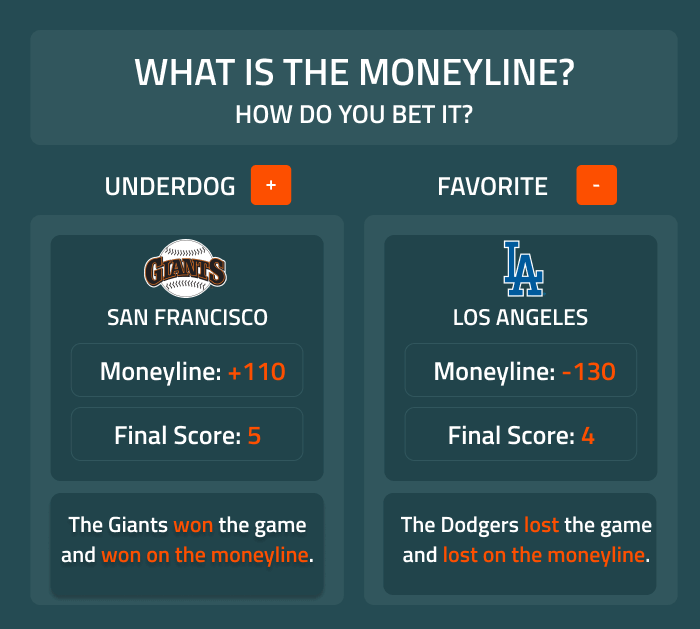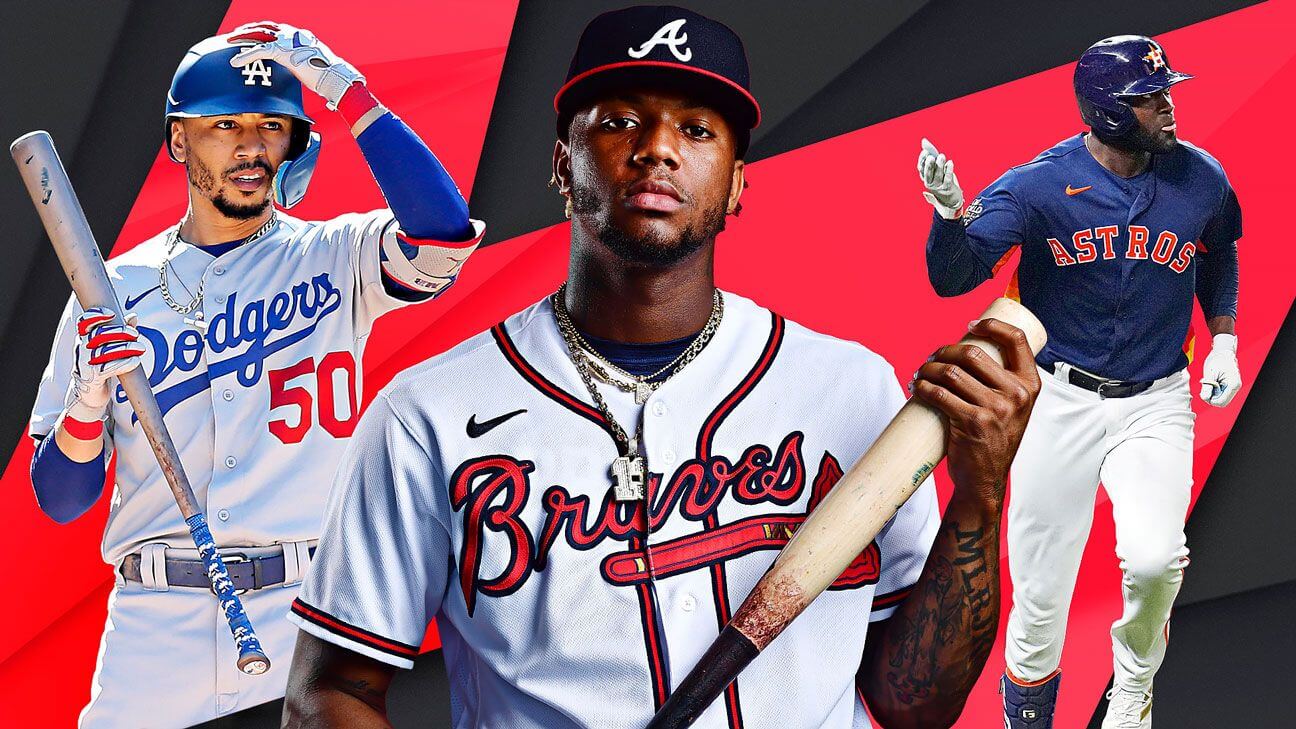A run line in baseball betting is a type of wager where the bettor picks a team to win by a certain number of runs. Unlike a moneyline bet where you simply pick which team will win, a run line includes a point spread, usually of 1.5 runs.
For example, if the run line is Team A -1.5 runs and Team B +1.5 runs, Team A must win the game by 2 or more runs to cover the spread. If Team B loses by 1 run or wins the game outright, they cover the +1.5 run line. Essentially the favorite team has to win by 2 or more runs and the underdog team just needs to avoid losing by 2 or more.
The main difference between a run line and a moneyline is the run line evens out the odds between the favorite and underdog. In a moneyline bet there can be a big difference in odds, like -200 for the favorite and +150 for the underdog. But with the run line smoothing out the odds, you’ll often see -115 odds for both sides of the bet.
Run lines give bettors an opportunity to back the underdog at more favorable odds, while still needing them to win outright like on a moneyline. It provides a nice balance of risk versus reward.
Origins and History

Run lines were first introduced by bookmakers in the 1980s as a way to attract more betting on MLB games 1. The standard moneyline odds heavily favor the underdog, and many bettors were hesitant to lay large odds on the favorite. The run line gives the favorite team a 1.5 run advantage in order to balance out the odds.
Run lines started as an experiment by some Vegas sportsbooks, but gained popularity once bettors realized they could get reduced juice on the run line compared to the moneyline. Over time, the run line spread gravitated toward 1.5 runs as the optimal balance for equalizing wagering.
Other key events in the evolution of run lines:
-
1990s – Run lines become widely offered at sportsbooks across the country.
-
Early 2000s – Online sports betting helps popularize run line betting for casual fans.
-
Today – Run lines are a staple offering for MLB at all regulated sportsbooks.
The run line ultimately succeeded because it allowed bettors to back heavy favorites at reduced risk compared to the moneyline odds. While the payouts are lower, many prefer the consistency of getting a run and a half.
Using Run Lines vs Moneylines
Run lines and moneylines are the two most common ways to bet on baseball games. While they may seem similar at first glance, there are some key differences between these two wager types that bettors should understand before placing their bets:
Moneyline

A moneyline bet is a simple wager on which team will win the game, regardless of the final score or margin of victory. Moneyline odds are based on each team’s perceived strength and chances of winning. Strong favorites will have negative odds (e.g -150) while underdogs receive positive odds (e.g. +130).
Pros:
- Simplest type of bet with no point spread to cover
- Allows betting on perceived underdogs at better payouts
Cons:
- Less potential payout compared to run line bets on favorites
- No margin for error – team must win outright
Run Line

With run line betting, the favored team must win by at least 2 runs for that bet to cash. The underdog team can lose by 1 run and still cover the run line. This functionality is very similar to a point spread in other sports like football or basketball. Run line odds also reflect perceived advantage for each team.
Pros:
- Allows betting on favorites at reduced risk
- Potential for higher payouts with 2-run cushion
Cons:
- Team must cover 2-run spread to win bet
- Less potential payout compared to moneyline on underdogs
In summary, moneylines provide a straightforward wager on the outright winner, while run lines add a margin that must be covered. Bettors may utilize either option depending on their confidence in a team and desired risk/reward profile.
Calculating Run Line Odds
Sportsbooks use a few key factors to calculate run line odds in baseball betting. The most important factor is the moneyline odds for each team. These indicate which team is favored and by how much. The run line aims to even out the odds between the favorite and underdog.
To create run line odds, sportsbooks start with the moneyline odds and adjust based on the -1.5 spread. For a large favorite with moneyline odds of -200, the run line odds may end up around -115. Meanwhile, for the underdog, the +1.5 run line odds could be +105 based on a +175 moneyline.
Other factors sportsbooks consider include the starting pitchers, recent performance trends, injuries, and home field advantage. Strong pitching and hitting matchups may shift the run line odds more in one direction. Recent hot or cold streaks for a team also impact the odds calculations.
In the end, the run line odds aim to attract equal betting action on both sides. Sportsbooks adjust the lines as needed so the amount wagered on the favorite -1.5 and the underdog +1.5 balances out. This minimizes risk for the sportsbook while offering bettors options beyond just the moneyline.
Run Line Strategies

When betting MLB run lines, there are a few key strategies to consider for analyzing matchups and managing risk:
-
Focus on large favorites with strong pitching. Teams favored by 1.5+ runs often have an ace pitcher starting, making it more likely they will cover the run line. However, you’ll have to lay heavier juice (-150 or more).
-
Look for “reverse run line” value on big underdogs. Taking a +1.5 run line on a large underdog at +120 or more odds can provide great payouts when they keep games much closer than expected.
-
Avoid laying run lines for inconsistent favorites. Teams that score a lot but give up many runs too can lead to “loss” bets even when winning straight up. It’s safer to just bet them on the moneyline.
-
Watch for tired bullpens. Teams playing lots of consecutive days with overworked relievers often fail to cover run lines late in games. Target rested teams with fresh arms out of the pen.
-
Buy low after blowout losses. Favorites that get crushed one game tend to bounce back focused the next. The run line price will be discounted after a bad loss.
-
Fade teams with losing streaks. Cold teams struggling to win games are risky run line bets. Wait for them to start winning again before laying the 1.5 runs.
-
Review past head-to-head results. Some matchups heavily favor one team, while other series are always close battles. Check the trends before betting the run lines.
Impact on Gameplay
Run lines inherently incentivize teams to play differently than they would in a typical moneyline bet. With a 1.5 run spread, the favored team is motivated to not just win, but win by multiple runs to cover the spread. This encourages the favored team to take more risks to run up the score, such as stealing bases, swinging for extra bases instead of singles, and extending starting pitchers deeper into games.
Conversely, the underdog team is incentivized to lose by just 1 run, hoping to keep the game close but still lose. This can lead to questionable managerial decisions like removing a starting pitcher prematurely or questionable sacrifices to give up outs and limit run potential. Some experts argue this distorts the natural competitiveness of a baseball game.
There are also concerns around potential score manipulation, especially late in games where the spread is still in reach. Teams well ahead may throttle back, while teams just behind the spread may push extra hard to catch up. This had led to accusations of point shaving, similar to controversies in other sports with spread betting like basketball. However, clear evidence of manipulation remains rare.
Overall, run line betting adds an extra strategic layer to baseball gambling and forces teams to balance risk versus reward in new ways. But it also opens the door to potential scoreboard watching and manipulation that bettors should monitor.
Notable Run Line Upsets

Some of the most memorable moments in baseball history have come from huge run line upsets.
Here are a few of the biggest and most improbable run line betting wins:
In September 2011, the Baltimore Orioles were +1.5 run underdogs against the Boston Red Sox, who were leading the AL Wildcard race at the time. The O’s shocked the baseball world by winning 4-3, dealing a huge blow to Boston’s playoff hopes.
During the magical 2006 season of the underdog Kansas City Royals, they beat the powerhouse +1.5 run favorite New York Yankees 9-7 as nearly +200 underdogs. The Royals had an MLB-worst 62-100 record but played spoiler.
The Los Angeles Dodgers pulled off a massive upset in 2019 as +1.5 run dogs against the league-leading Houston Astros. LA won 5-2 despite having a losing record at that point in the season.
These miraculous wins demonstrate the unpredictable nature of run line betting. No lead is safe when betting run lines, especially when big underdogs with nothing to lose are involved.
Future of Run Lines
The future of run lines in baseball betting could see some changes as sports betting continues to expand. One potential change is adjusting the spread from 1.5 runs to a different amount, like 1 or 2 runs. This would alter the odds and appeal to different types of bettors.
There is also speculation that run lines could expand to other sports beyond baseball. The spread betting concept is already popular in basketball, football, and hockey using point spreads. Run lines present an intriguing option to incorporate into low-scoring sports like soccer, bringing more betting options to matches that often end with only a one goal differential.
While run lines have traditionally been a baseball betting specialty, the continued growth of legal sports betting could see this type of spread betting adapted for new sports and leagues. The run line’s combination of higher risk and potential reward fills an interesting niche in baseball betting markets that some predict could work similarly in other sports betting contexts. However, only time will tell if run lines expand beyond their MLB origins.
Run Lines vs Other Sports

The run line in baseball betting functions similarly to puck lines in hockey betting and goal lines in soccer betting. All three are derived from the more general concept of a point spread in sports betting.
The key difference between run lines and the other two is the standard spread of 1.5 runs in baseball, compared to 1.5 goals in hockey and soccer. This accounts for the generally lower-scoring nature of baseball games. While hockey and soccer teams may often score 3-5 goals in a game, baseball teams frequently score fewer than 5 total runs.
Like with puck lines and goal lines, the run line adjusts the spread from the usual -110 odds on the moneyline. It aims to create closer to a 50/50 proposition in betting odds, as most teams would be expected to win or lose by 1-2 runs. The run line rewards bettors who can pick upsets or successfully bet on favorites to win bigger.
While point spreads in basketball and football are typically larger than 1.5 points, the run line allows for similarly reduced risk bets on favorites or underdogs in baseball contests. Bettors who are less confident in their pick can gain security by giving up some of the potential payout.
So in summary, run lines give baseball bettors an alternative to moneylines with fixed odds similar to what puck lines and goal lines provide in their respective sports. The 1.5 run spread is tailored to the typical scores in baseball games.
Summary
Run lines are a popular way to bet on baseball games that aims to make the two teams more evenly matched. By adjusting the spread to 1.5 runs, run line betting creates a tighter point spread compared to moneylines.
Some key points about run lines covered in this article include:
-
Run lines originated in baseball betting as an alternative to moneylines to encourage more balanced betting. The 1.5 run spread aims to even out the teams.
-
Calculating run line odds shifts the odds for each team closer to even (-110 for both favorites and underdogs), compared to moneyline odds which can vary widely.
-
Run line betting strategies focus on identifying games where the spread makes a big difference in evening out the teams. This allows bettors to get better odds.
-
Notable run line upsets happen when big underdogs cover the 1.5 run spread. This can provide big payouts for successful bettors.
-
Run lines have become popular in baseball betting and may expand into other sports as a form of point spread betting.
In summary, run lines aim to balance baseball betting by adjusting the teams’ scores by 1.5 runs. This unique baseball betting option provides new strategies to consider when wagering on MLB games.








